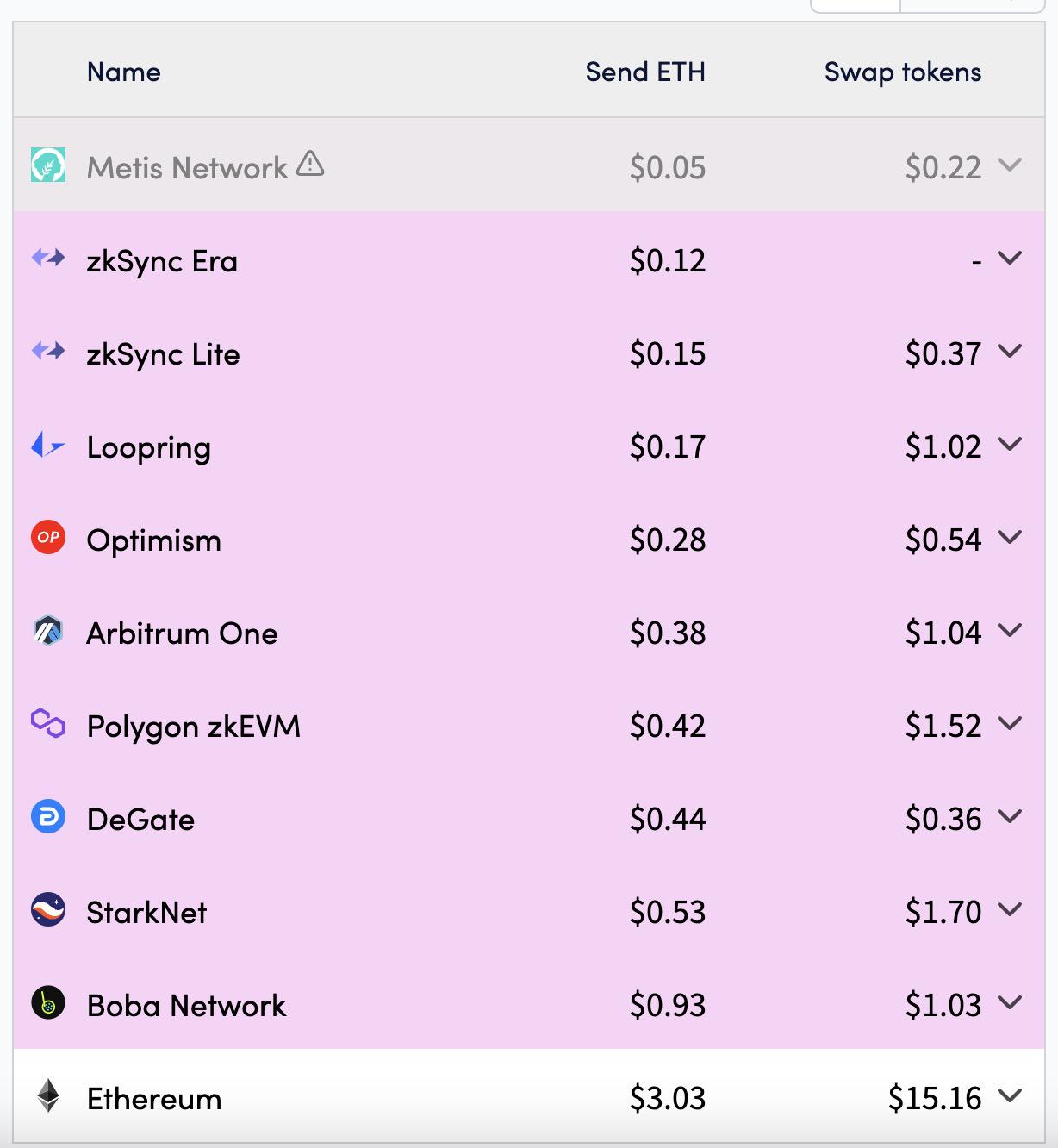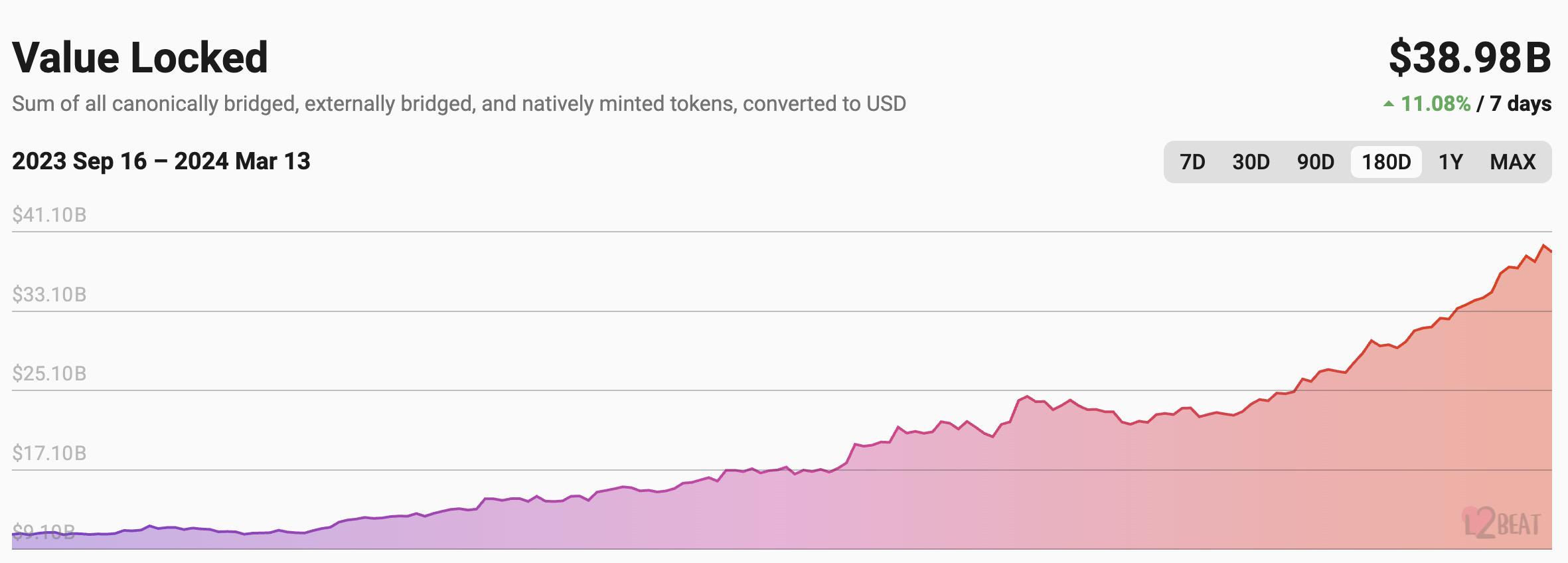After several delays, it is finally officially launched! Which tracks will benefit from the Ethereum Dencun upgrade?
- WBOYWBOYWBOYWBOYWBOYWBOYWBOYWBOYWBOYWBOYWBOYWBOYWBforward
- 2024-03-14 15:40:031155browse
After many delays, the highly anticipated Dencun upgrade of Ethereum was finally officially activated at block height 8626176, 21:55 Beijing time on March 13, marking Ethereum’s move towards a more secure and efficient block. Chain network takes another step forward.
What are the core highlights of Dencun upgrade? Which tracks will it have a direct positive impact on?
Nine EIPs have been implemented, and EIP-4844 has become the focus of market attention
Dencun is the abbreviation of Cancun-Deneb, where Cancun is another upgrade to the Ethereum execution layer after the Ethereum Shanghai upgrade. Focusing on the improvement of the Ethereum execution layer (EL), this is also often referred to as the Cancun upgrade; while the Deneb upgrade focuses on the improvement of the consensus layer (CL). Before officially landing on the Ethereum mainnet, Dencun has successfully launched Devnet, Goerli testnet, Sepolia testnet and Holesky testnet.
This Dencun upgrade contains 9 EIPs (Ethereum Improvement Proposals), namely EIP-1153, EIP-4788, EIP-4844, EIP-5656, EIP-6780, EIP-7044, and EIP-7045 , EIP-7514 and EIP-7516, which can improve the Ethereum staking experience and cost efficiency.
Among them, EIP-4844, also known as Proto-Danksharding, is a pre-sharding solution. It is named after two Ethereum researchers, Dankrad Feist and Proto Lambda. It is also the most discussed proposal in the market. . According to previous analysis by JP Morgan analysts, the EIP-4844 upgrade may take a bigger step in improving Ethereum network activity, thereby helping Ethereum perform well and pushing Ethereum to surpass Bitcoin; according to Polygon zkEVM Lianchuang Jordi Baylina said not long ago that after Dencun upgrades and implements EIP-4844, the total data availability capacity of Ethereum will increase by 3 times; after combining EIP-4844 with data compression, the potential cost reduction ranges from 10 times to 50 times, but Actual cost savings will depend on a variety of factors.
Ethereum has always been known for performance issues, which is also one of the main challenges it encounters in large-scale application. Sharding technology is considered an effective means to improve the performance and scalability of the Ethereum network. However, it is currently difficult to implement sharding technology to promote network expansion, and EIP-4844 is regarded as a stopgap measure for the current expansion of Ethereum.
EIP-4844 creates additional temporary data storage space on Ethereum by introducing a new transaction format Blob (Binary Large Object), thereby significantly reducing Ethereum Layer 2 transaction costs and achieving higher Transaction throughput. Currently, popular Layer 2 solutions including Starknet, Base, Polygon zkEVM, Linea, and Arbitrum have committed to integrating EIP-4844.
Which sectors benefit the most?
With the official upgrade of Dencun, in addition to increasing the market value of Ethereum and further expanding its user base and ecological scale, Layer 2, staking, storage and DA tracks will also benefit, and have been used in TVL and proxy This is reflected in market data such as currency prices.
Layer2

Layer2 is a track directly affected by the Dencun upgrade. Performance upgrades and cost reductions will further drive the development of this field. L2Fees data shows that as of March 13, usage fees on the Layer 2 network are higher. For example, the average fee for sending ETH on Arbitrum is $0.31, the cost of Swap tokens is $0.85, and the fees on Optimism are $0.2 and $0.2 respectively. $0.39 etc. After the adoption of EIP-4844, welovetheblobs data predicts that, for example, on the Base network, the transaction cost of executing a Swap on Uniswap will be reduced from US$0.58 to US$0.01.

Affected by the Dencun upgrade, L2 BEAT data shows that as of March 13, the TVL of Ethereum Layer 2 has reached 38.98 billion US dollars, an increase of approximately 11.08% in the past 7 days. %. Among them, in addition to Layer 2 projects such as Arbitrum, OP Mainnet, Manta Pacific, Starknet and Metis that have accumulated tens of billions of dollars in TVL, unissued projects such as Blast, Base, zkSync, Linea and Scroll are also the focus of market funds. of.
LSD/Restaking
Since Ethereum switched from PoW to PoS, its pledge scale has continued to expand. While increasing network security, it has gradually evolved into LSD, Restaking and other gameplay methods. However, the withdrawal mechanism and security risks of Ethereum staking have brought poor user experience. For this reason, EIP-7044 and 7045 in the Dencun upgrade have optimized the staking experience. Among them, EIP-7044 will allow signed voluntary withdrawals indefinitely. EIP-7045 is an Ethereum improvement proposal for network proof slots that can reduce block confirmations time. In addition, as the amount of ETH pledged increases, the consensus layer responsible for transaction confirmation also faces a greater burden. In this regard, the EIP-7514 proposal slows down the excessive growth of Ethereum staking by changing the growth rate of validators.
Looking at the current staking market, EigenLayer, Renzo, Kelp DAO, ether.fi and Puffer Finance are the key projects deployed by market funds, and most of them have not yet issued tokens.
DA Layer/Storage
As mentioned earlier, the Dencun upgrade introduces temporary data storage capacity through Proto-danksharding, but because Blobs will clear data regularly, that is, the project has problems when calling historical data. This will also stimulate the need for decentralized storage and data availability (DA) layers. In addition to old storage projects such as Filecoin, Arweave, Storj and ETHStorage, Celestia, EigenDA, NEAR DA, Covalent EWM and Avail are currently popular DA projects. After Dencun upgrade, data storage costs can be greatly reduced, becoming more Layer 2 projects. s Choice.
RaaS
The successive launch of Layer2 Stack solutions such as OP Stack, Polygon CDK, Arbitrum Orbit and ZK Stack are stimulating the demand for RaaS. RaaS (Rollup as a Service) is similar to a SaaS product and provides users with friendly tools and services to integrate and deploy Rollup solutions, including software development kits (SDK), no-code development options and shared sequencers, especially for development For investors, RaaS services can be used to select the appropriate technology stack to easily deploy applications, which will help solve the complex problems of application creation, deployment and management currently faced by Rollups. Currently, projects on the RaaS track include Altlayer, Caldera, Conduit, Lumoz and Opside, etc., and they have reached cooperation with many agreements.
The above is the detailed content of After several delays, it is finally officially launched! Which tracks will benefit from the Ethereum Dencun upgrade?. For more information, please follow other related articles on the PHP Chinese website!
Related articles
See more- Why use Go language to write blockchain
- How to use blockchain technology in Go?
- Ethereum will outperform Bitcoin in 2024: JP Morgan predicts BTC bullishness will be weak
- Ethereum Layer 2 security requirements should go beyond multi-signature mechanisms
- Calm thoughts before the Ethereum Dencun upgrade: A short-term cure for the expansion problem?

